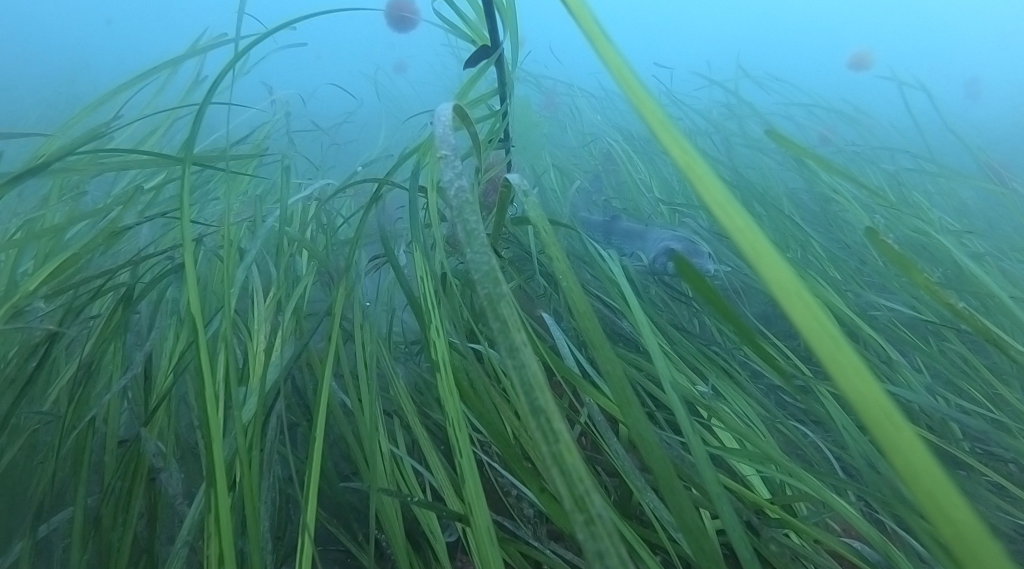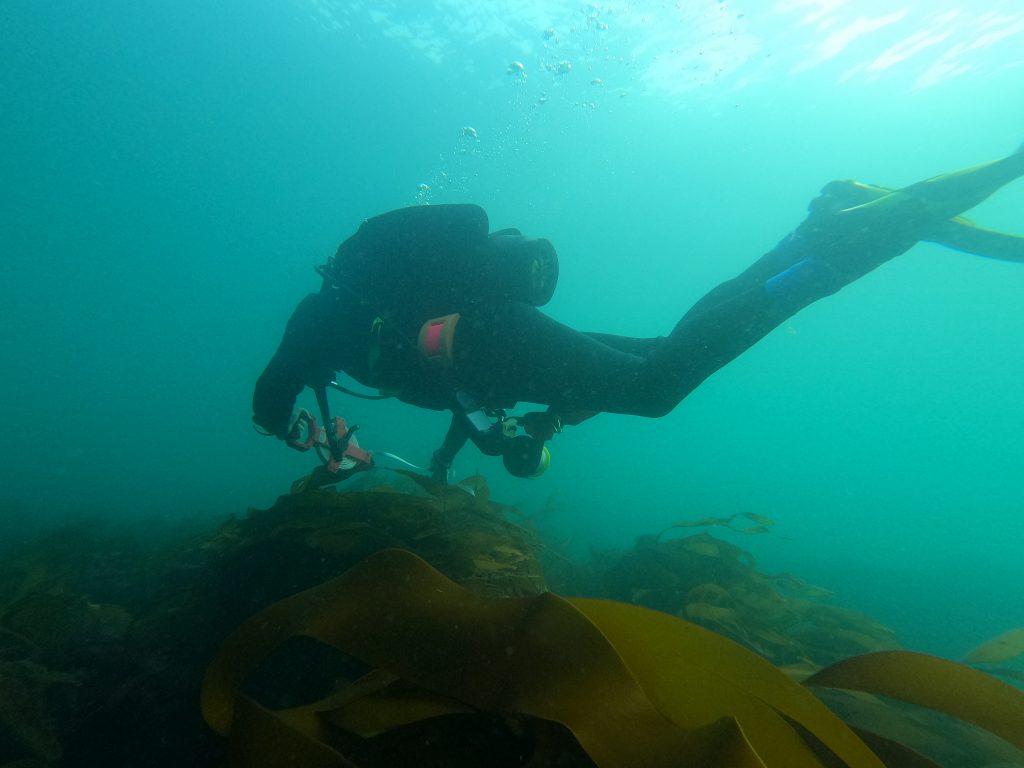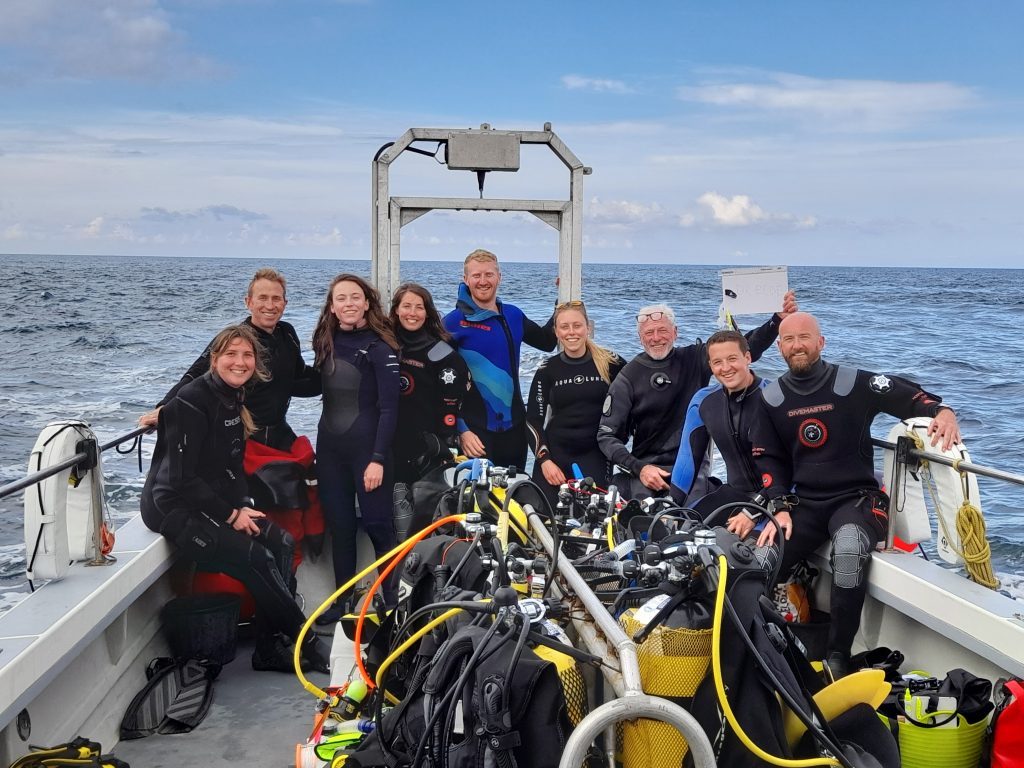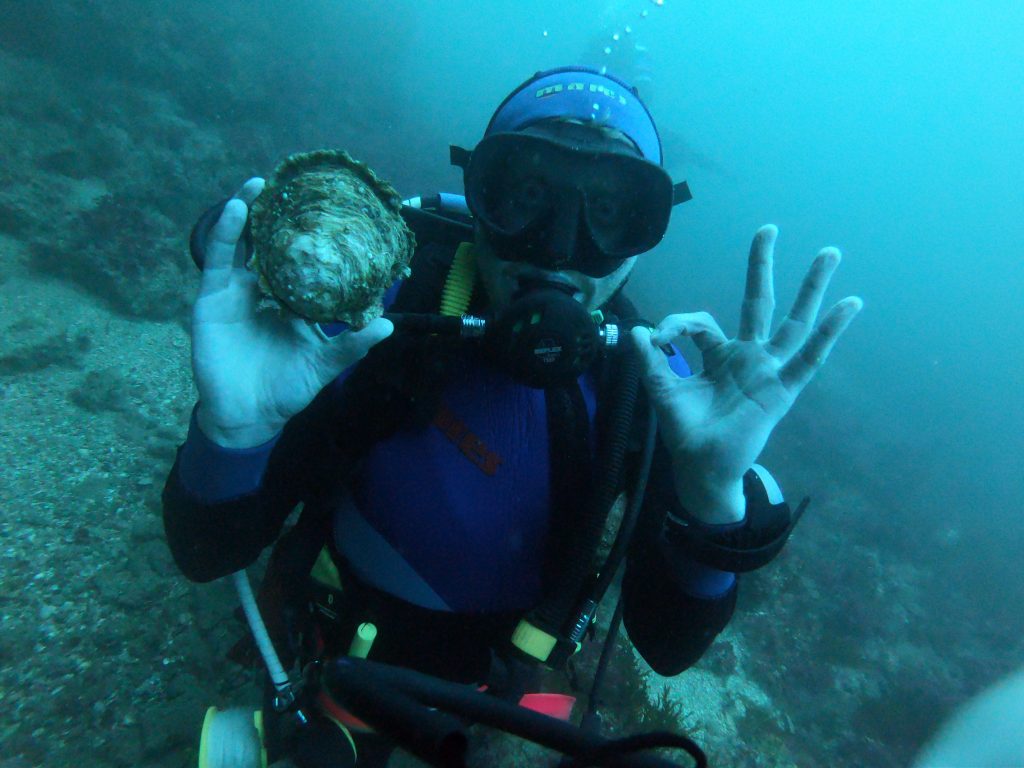Adventures of a dive survey in the seagrass meadows of Jersey
During the summer of 2021, Blue Marine Foundation (BLUE) undertook a dive survey around Jersey in the Channel Islands, joined by Jersey Marine Conservation and several generous volunteers. These surveys fell into two categories: seagrass bed monitoring on the east coast, and general habitat assessments. We completed the surveys at sites that were already known to be particularly biodiverse, to help us understand a bit more about what species live there.
Diving around Jersey can be challenging. The large tidal range (up to 12 metres on large spring tides) means that diving is best carried out on neap tides. In addition, each dive site has a different slack water time (the time when the tidal currents reverse and for a short period of time slow down substantially, providing calmer conditions). These times could be an hour before low water, 90 minutes after high water, or anything in between. Careful planning of dive timings is hugely important, as it can mean calmer currents and better visibility (tidal currents in full flow can whip up sediment into the water column). As a result, each dive was planned with military precision by Samantha Blampied, logistics planner extraordinaire.
Our first dive took place in St Catherine’s Bay, a beautiful sheltered spot on the east coast. There is an extensive seagrass meadow that has grown substantially since the construction of a large breakwater in the 19th century, which also forms the north-eastern boundary of the bay. We quickly realised that the seagrass beds at our first survey site were so well established that we hadn’t brought large enough bags to collect our samples. While logistically this proved to be a bit of a challenge, it was a problem we were very happy to have. A healthy seagrass meadow is a lovely site to behold!

Picture – Seagrass beds (Zostera marina) on the east coast of Jersey, captured on baited remote underwater video (BRUV).
We were lucky enough to be able to survey a huge variety of sites through the week, including some beautiful maerl beds, kelp forest and rocky walls with a stunning array of pink sea fans, sponges and anemones. In marine conversation, it’s vital to build up a detailed idea of what habitats and species exist where, to be able to advocate for their protection. The surveys were hugely important in filling some of the gaps in our knowledge, particularly for the offshore reefs that are otherwise hard to monitor using remote equipment such as baited remote underwater video (often abbreviated to BRUV) and towed video.

Picture – Kelp forest at the Ecrehous.
While the week started well, wind- and weather-wise, we were forced to stop partway through when the conditions worsened. But things improved within a couple of days, and we were able to finish off the dive survey near where we’d started, in St Catherine’s Bay, this time on some much younger seagrass beds. These sparser areas of seagrass revealed a bit more of what was living within the beds, and we spotted a catshark within the first minute of arriving at the site. It highlighted the importance of healthy seagrass beds as shelter for the many species that live within them.
It was a great trip, successful in capturing plenty of data to be used for assessing Jersey’s incredible marine life and habitats. Huge thanks go to the volunteer divers: Kevin and Emily of Jersey Marine Conservation, Clive, Wayne, Izzy, Sam and Bede. A huge thanks also to Wreck and Reef Charters for providing their dive vessel, Magic (as well as endless hot cups of tea and biscuits between dives). We look forward to putting the data to good use and collecting more in the future!

Picture – Some of the team aboard the dive vessel, Magic.
Benefits of a dive survey
The seagrass bed surveys were completed with the aim of understanding the density and biomass (the mass of living material) of the seagrass beds at various locations on the east coast of the island. For each seagrass survey, we split into teams of two or three divers. We swam along a transect — a line along which a survey is completed, usually measured out along a large measuring tape — stopping at pre-defined points to take measurements. At each site, we took photographs to record the density of the seagrass, collected samples which were bagged and taken to the surface for counting and checking for other things such as disease, seed pods or anything else we might find (for example, whelk eggs weren’t uncommon to find stuck to the blades).
Understanding this information has several benefits. Firstly, it helps us to understand how much carbon the seagrass is holding in the areas we surveyed. Secondly, this work complements the data collected by Masters student Pilar De St Ferrer (see her blog post here), to get an understanding of how the density of a seagrass bed impacts its ability to provide shelter for other species, including those commercially important species like crab and whelk.
On our habitat assessment dives, the process was largely the same. We collected photographs and videos at each site for analysis of the species that were present. For both types of survey, we also recorded any other mobile species that we saw. For many of us, the firm favourite was a large bull huss (a species of catshark), sitting quietly on a bed of seaweed, waiting for us to pass over. However, for Dr Luke Helmer, BLUE’s Restoration Scientific Officer, this may perhaps have been seeing a large native oyster in the wild, estimated at around 20 years old!

Picture – Luke Helmer, BLUE’s Restoration Scientific Officer, holding a rare native oyster found at an offshore reef


















